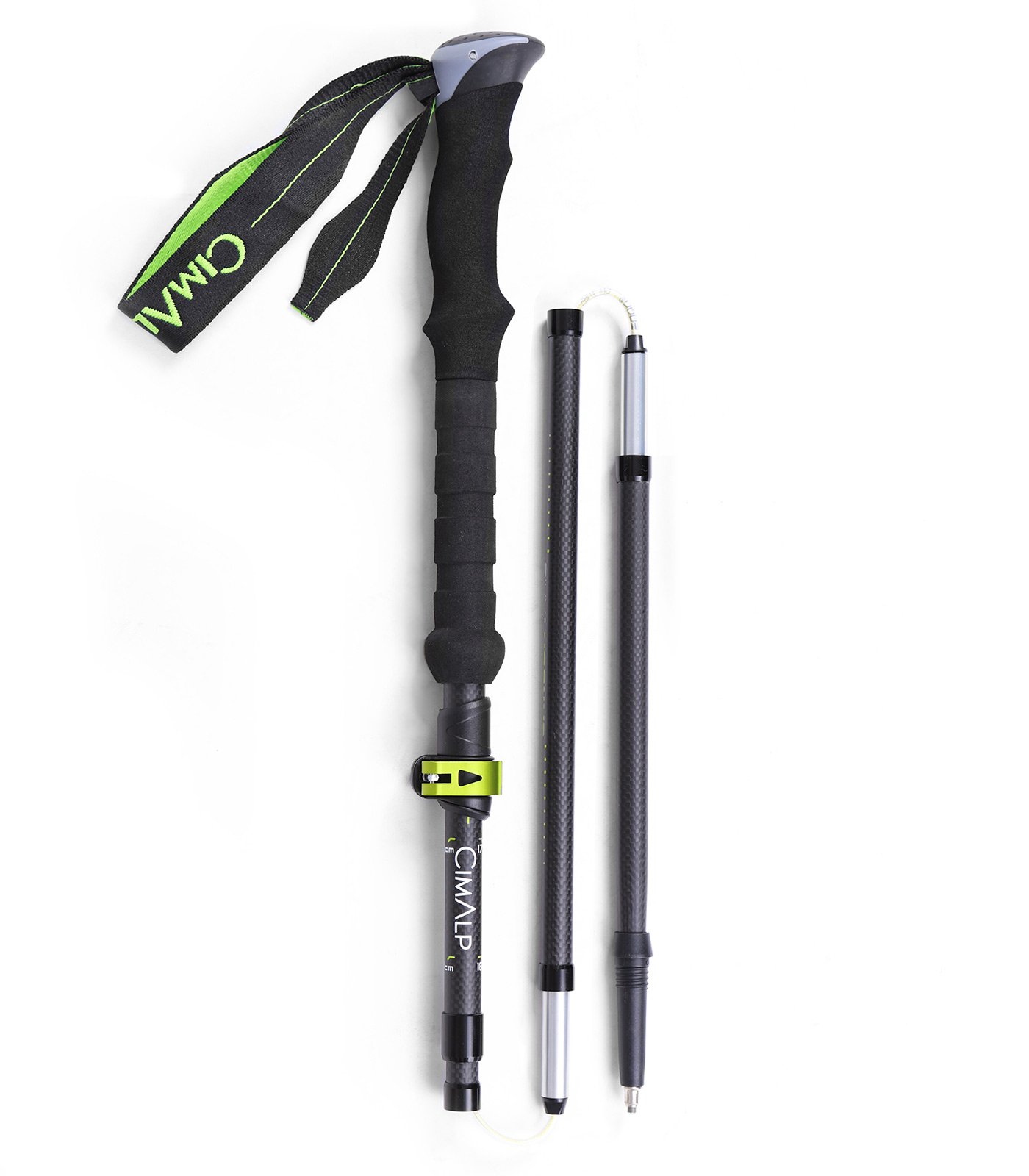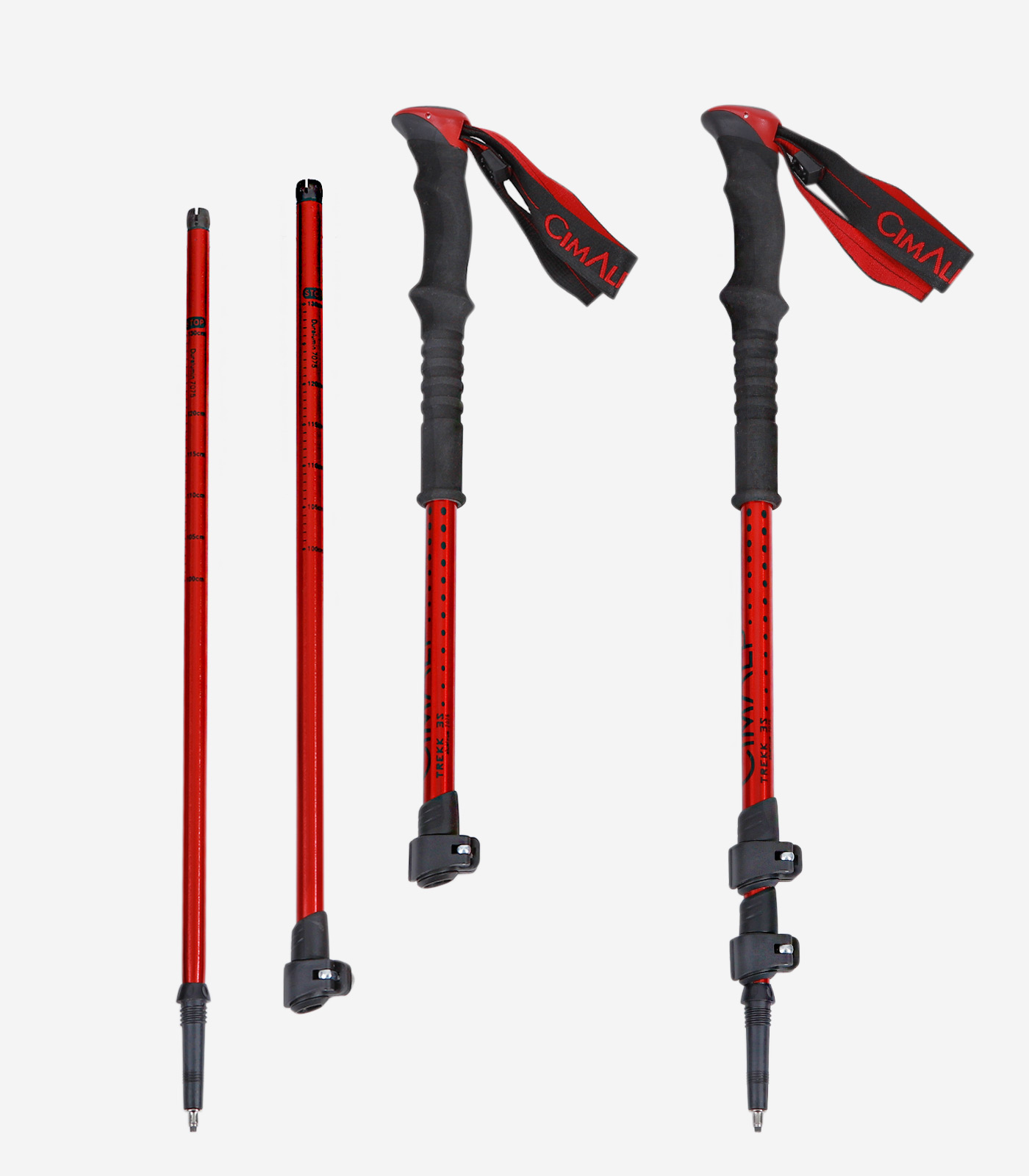Single or multi-strand poles, fixed or telescopic?
Fixed or telescopic poles? This is one of the first questions you ask yourself when choosing your hiking, Nordic walking or trail poles. Here is a comparison table to help you answer it.


First of all, you should know that it is more correct to talk about single or multi-strand poles, rather than fixed or telescopic poles. As the name suggests, single-strand poles are made up of a single strand. It is therefore impossible to adjust their length, which remains the same, and therefore fixed, no matter what happens. Multi-strand poles are made up of several strands, which means that they can be stored and their size reduced by folding or retracting them. They can therefore be foldable or telescopic. Please note that not all retractable poles are foldable and not all foldable poles are retractable.
Nordic walking is practised on easy terrain, i.e. relatively flat, neither steep nor uneven. The walker needs his poles for the entire duration of the walk, he never leaves them. It is therefore not necessary to use folding or telescopic poles which, on the contrary, tend to be heavier and, above all, do not offer the powerful and rectilinear swing of a single-stranded pole, nor its optimal absorption of ground vibrations.
When hiking or trail running, it is better to be able to store your poles in your rucksack or to hang them on your belt for certain passages and to benefit from a minimum amount of space. It is therefore preferable to use poles with a storage system, whether they are foldable or telescopic.
Telescopic or folding poles?
When hiking (and trail running if you choose multi-pole poles), you will have to choose between two storage systems: telescopic or folding. Both options are equally valid and will allow you to store your poles in your rucksack or to hang them on your belt for a minimum of space.
Before you decide, be aware that :
While it is always possible to adjust the length of telescopic poles, this is not necessarily the case for folding poles. If you practice on uneven terrain, be sure to check whether the length of the poles is adjustable.
While telescopic poles usually have two or three poles, folding poles have at least three. The more strands they have, the less space they will take up when folded.
There are two types of telescopic poles depending on their clamping system, screw telescopic poles and clip telescopic poles. In the table below we do not consider screw telescopic poles as they may become loose during a hike or too difficult to unscrew. They are cheap, but not really comparable to folding poles. However, they are quite suitable for occasional short trips over easy terrain.
Let's compare the different characteristics of the fixed length single shaft, telescopic multi shaft and folding multi shaft poles in the comparison table below. Our comparison system goes from 1 for the most advantageous option to 3 for the least advantageous.
Please note that the weight and strength of the poles does not only depend on the number of poles or the storage system, but also on other parameters such as the material from which they are made or the clamping system. In this table we assume that we are comparing poles whose shafts are made of the same material and that they belong to the same quality range.
| Single-core poles (fixed length) | Adjustable folding poles | Telescopic poles with clip | |
| Lightness | 1 | 2 | 3 |
| Space saving | 3 | 1 | 2 |
| Strength / durability | 3 | 1 | 2 |
| Vibration absorption | 1 | ⛔ | ⛔ |
| Price: most economical | 1 | 3 | 2 |
| Easy and quick to deploy | ⛔ | 1 | 2 |
| Adjustable in height: can be lent out | ⛔ | 1 | 1 |
